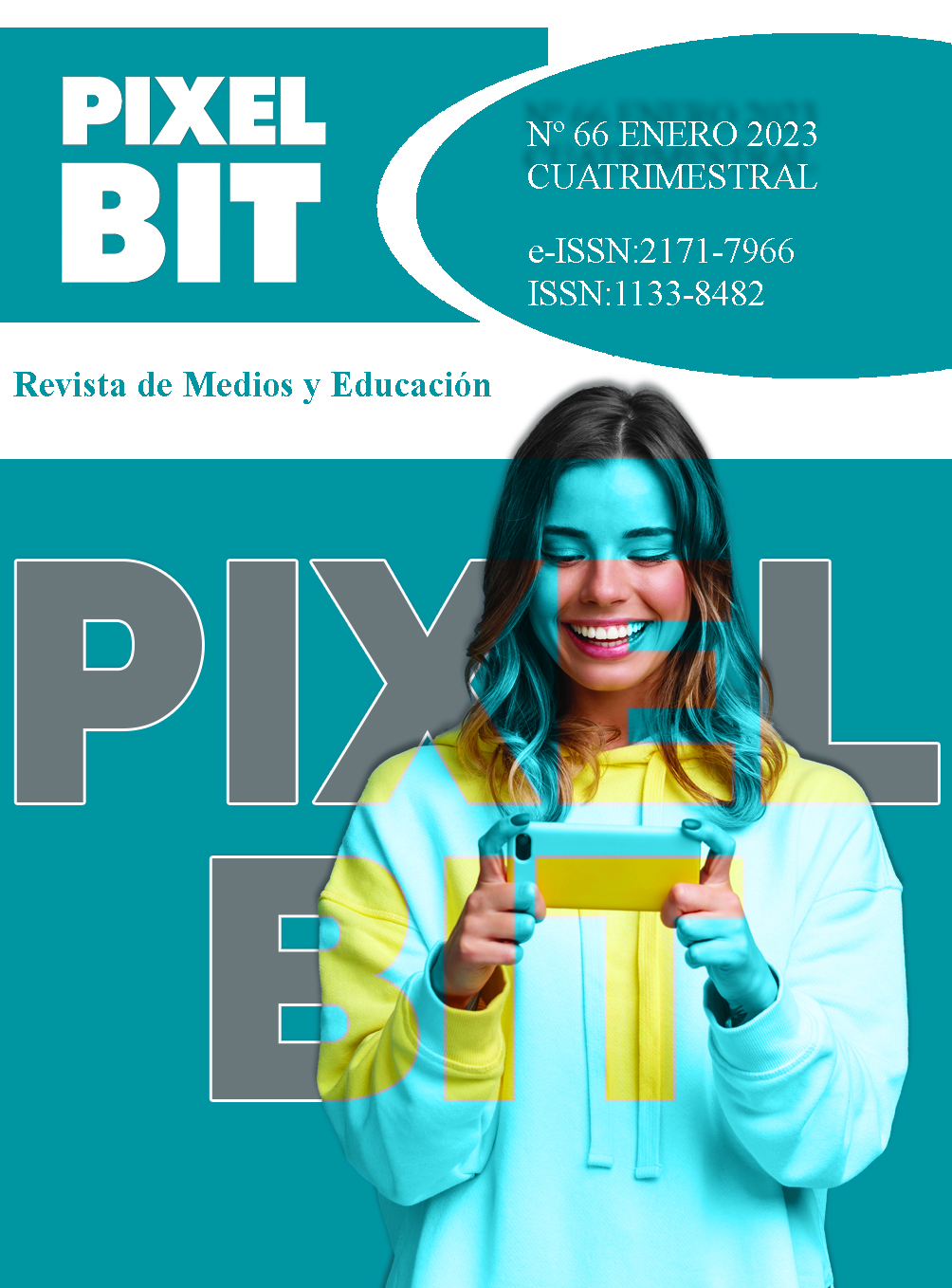Abstract
The electrocardiogram (ECG) is the main diagnostic means to identify alterations in electrical conduction of the heart. Therefore, correctly interpreting the ECG is an essential but highly complex competency for health sciences students.
With the aim of facilitating the learning of electrocardiography in our students, a free access mobile application and validated content was developed. The creation process was completed in four phases: content development, validation with experts, software development and usability testing. The content was validated by five experts, reaching a content validity coefficient of .91 for clarity, .95 for accuracy, and .97 for relevance. The usability test was carried out by applying the Spanish version of the Computer System Usability Questionnaire (CSUQ) to 33 subjects from the nursing program, who scored: system quality 6.41/7, information quality 6.07/7, interface quality 6.55 /7 and general satisfaction 6.52/7.
The ECG para enfermería consists of four learning modules and a heart rhythm simulator for the identification of the main arrhythmias. Was published in 2021 and has reached more than forty countries.
References
Amaro, L., Hernández, P, Hernández, A., & Hernández, L. (2019). La simulación clínica en la adquisición de conocimientos en estudiantes de la Licenciatura de Enfermería. Enfermería universitaria, 16(4), 402-413. https://doi.org/10.22201/eneo.23958421e.2019.4.543
Antiperovitch, P., Zareba, W., Steinberg, J. S., Bacharova, L., Tereshchenko, L. G., Farre, J., Nikus, K., Ikeda, T., & Baranchuk, A. (2018). Proposed In-Training Electrocardiogram Interpretation Competencies for Undergraduate and Postgraduate Trainees. Journal of hospital medicine, 13(3), 185–193. https://doi.org/10.12788/jhm.2876
Arsanious, M. N., & Brown, G. (2018). A novel approach to teaching electrocardiogram interpretation: learning by drawing. Medical education, 52(5), 559–560. https://doi.org/10.1111/medu.13535
Aycock, M. M., & Brown, S. D. (2021). Utilizing Supplemental Online Modules for Physician Assistant Student Electrocardiogram Interpretation Training. The journal of physician assistant education: the official journal of the Physician Assistant Education Association, 32(4), 242–247. https://doi.org/10.1097/JPA.0000000000000391
Breen, C., Kelly, G., & Kernohan, W. (2019). ECG interpretation skill acquisition: A review of learning, teaching and assessment. Journal of electrocardiology, S0022-0736(18)30641-1. https://doi.org/10.1016/j.jelectrocard.2019.03.010
Chen, Y., Kunst, E., Nasrawi, D., Massey, D., Johnston, A., Keller, K., & Fengzhi Lin, F. (2022). Nurses' competency in electrocardiogram interpretation in acute care settings: A systematic review. Journal of advanced nursing, 78(5), 1245-1266. https://doi.org/10.1111/jan.15147
Conelius J. (2022). Interactive e-Learning Electrocardiogram Module: Increasing Confidence and Interpretation Ability Among Family Nurse Practitioner Students. Nursing education perspectives, 43(1), 53-54. https://doi.org/10.1097/01.NEP.0000000000000752
Cook, D., Oh, S., & Pusic, M. (2020). Accuracy of Physicians' Electrocardiogram Interpretations: A Systematic Review and Meta-analysis. JAMA internal medicine, 180(11), 1461-1471. https://doi.org/10.1001/jamainternmed.2020.3989
Edirippulige, S., Smith, A. C., Wickramasinghe, S., & Armfield, N. R. (2018). Examining the Influence of E-Health Education on Professional Practice. Journal of medical systems, 42(11), 11-16. https://doi.org/10.1007/s10916-018-1084-5
Garrison, E., Colin, S., Lemberger, O., & Lugod, M. (2021). Interactive Learning for Nurses Through Gamification. The Journal of nursing administration, 51(2), 95–100. https://doi.org/10.1097/NNA.0000000000000976
Habibzadeh, H., Rahmani, A., Rahimi, B., Rezai, S. A., Aghakhani, N., & Hosseinzadegan, F. (2019). Comparative study of virtual and traditional teaching methods on the interpretation of cardiac dysrhythmia in nursing students. Journal of education and health promotion, 8, 202. https://doi.org/10.4103/jehp.jehp_34_19
Hedlefs, M., González, A., Miranda, M., & Villegas, A. (2015). Adaptación al español del Cuestionario de Usabilidad de Sistemas Informáticos CSUQ. Revista Iberoamericana de las Ciencias Computacionales e Informática, 4(8), 84-99. https://bit.ly/3NYTzKz
Hernández, R. A. (2002). Contributions to statistical analysis. Editorial Universidad de los Andes.
Kewcharoen, J., Charoenpoonsiri, N., Thangjui, S., Panthong, S., & Hongkan, W. (2020). A comparison between peer-assisted learning and self-study for electrocardiography interpretation in Thai medical students. Journal of advances in medical education & professionalism, 8(1), 18–24. https://doi.org/10.30476/jamp.2019.81458.1006
Kim, J., & Park, H. (2019). Effects of Smartphone-Based Mobile Learning in Nursing Education: A Systematic Review and Meta-analysis. Asian nursing research, 13(1),20–29. https://doi.org/10.1016/j.anr.2019.01.005
Kim, K., & Min, M. (2020). Comparative Analysis of ICT Accessibility and Usability of Korean Students Based on PISA 2015 and 2018 Data. International Journal of Internet, broadcasting and communication, 12(1), 73-80.
https://doi.org/10.7236/IJIBC.2020.12.1.73
López, A., Olivares, S., & Turrubiartes, M. (2018). Aprendizaje autodirigido utilizando la estrategia didáctica Aprendizaje Basado en Proyectos. Tarbiya, Revista De Investigación E Innovación Educativa, (46), 23–40. https://doi.org/10.15366/tarbiya2018.46.02
Maramba, I., Chatterjee, A., & Newman, C. (2019). Methods of usability testing in the development of eHealth applications: A scoping review. International journal of medical informatics, 126, 95–104. https://doi.org/10.1016/j.ijmedinf.2019.03.018
Paz, L., Gisbert, M., & Usart, M. (2022). Competencia digital docente, actitud y uso de tecnologías digitales por parte de profesores universitarios. Pixel-Bit. Revista de Medios y Educación, 63, 93-130. https://doi.org/10.12795/pixelbit.91652
Pérez Torres, M., & Hernández Arteaga, I. (2018). La tecnología: un aliado en el aula. Miradas, 1(1), 162 - 176. https://doi.org/10.22517/25393812.18891
Rodríguez, C., Fueyo, A., & Hevia, I. (2021). Competencias digitales del profesorado para innovar en la docencia universitaria. Analizando el uso de los dispositivos móviles. Pixel-Bit. Revista de Medios y Educación, 61, 71-97. https://doi.org/10.12795/pixelbit.86305
Solís, J., & Jara, V. (2019). Competencia digital de docentes de ciencias de la salud de una universidad chilena. Pixel-Bit. Revista de Medios y Educación, 56, 193-211. https://doi.org/10.12795/pixelbit.2019.i56.10
Turpo, O., Hurtado, A., Delgado, Y., & Pérez, G. (2021). Satisfacción del profesorado con la formación en servicio online: aproximaciones desde la usabilidad pedagógica. Pixel-Bit. Revista de Medios y Educación, 62, 39-70. https://doi.org/10.12795/pixelbit.79472

This work is licensed under a Creative Commons Attribution-NonCommercial-NoDerivatives 4.0 International License.
Copyright (c) 2022 Pixel-Bit. Media and Education Journal

